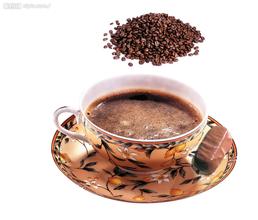Yunnan Coffee Bean Flavor description method Variety characteristics Grinding scale Origin introduction
Choose the coffee mother tree which is fully ripe, normal in shape, full in shape, the same size and with two seeds. To remove the peel of the selected fruit, you must be careful to prevent the seeds from being damaged and affect the germination rate, and then put the peeled seeds in a ventilated and cool place to dry. After the seed shell is whitened, the seeds can be stored, and the seeds can not be exposed to the sun. Put the seeds into bamboo baskets or cloth bags and turn them once a month in the mild sun, so that the seeds stored for a long time can maintain a high germination rate. Coffee seedlings need shade conditions, so the seedling land should be selected in shady slopes and sandy soil areas with certain shade conditions and water sources. The general method of seedling preparation is adopted to dig and loosen the soil into a seedbed and then sow seeds. According to sowing 1kg seeds, 1.5m2 seedbed is needed, and there are about 3500-4000 seeds per kilogram. If the emergence rate is more than 80%, 2500-3000 seedlings can be transferred. Before sowing, the seeds can be soaked in 40 ℃ warm water for 12 hours, and the effect is the best.
In the eyes of most Chinese, Yunnan Coffee is Yunnan small Coffee. Many people even think that Yunnan Xiaogi is a coffee tree. Perhaps in the eyes of many businessmen, this name means business opportunities, but in my eyes, this name is dispensable, he is at best a brand, absolutely can not be regarded as a coffee variety. Since we talk about the varieties of coffee in Yunnan, we have to mention "Catimor Katim". This coffee variety was introduced by Nestl é and then improved and hybridized into CIFC7963, which is now widely cultivated in Yunnan. The original seed is a hybrid of Timor Hybrid and Caturra. It is characterized by high yield of Caturra, dwarf of plant and strong disease resistance of timor. In the early days of its birth, Katim was considered by the industry to have a bad taste because of timor's Romsta pedigree. However, with the continuous improvement of varieties, the cup test of the sixth generation of F6 Katim has been on a par with that of Kaddura and Kaduai planted at low altitude. However, there is still a lot of gap between planting in high altitude areas and other varieties.
The growth and development of coffee is closely related to climatic and environmental conditions. In the areas where the wind is strong, the temperature is high, the light is strong, and the soil is easy to dry, the axillary buds of plant branches tend to differentiate into flower buds, and the growth of branches is small, which is easy to cause premature senescence. Therefore, it is necessary to choose a place with quiet wind, high humidity and short light as a garden. Small-grain coffee is a plant that needs water and is afraid of too much water. where the rainfall is less than 1400 mm, you should choose places with irrigation conditions or water conservancy facilities. the root system of coffee is very strong, and the soil drainage is poor, so drains should be added. If the soil has high sand content and poor water conservation and fertility, mulch should be used and organic fertilizer should be applied. The sloping land should be changed into terraced land in order to be suitable for planting. Dig the planting hole 2-3 months before planting, separate the topsoil from the inner soil when digging the ditch, return the topsoil to the ditch, and apply 100 kg calcium magnesium phosphate fertilizer per mu, where possible, apply 2-5 kg of soil miscellaneous fertilizer as base fertilizer, fill the ditch with topsoil about 15 days before planting (the topsoil is evenly mixed with base fertilizer), so as to avoid soil subsidence after planting and affect survival.

Important Notice :
前街咖啡 FrontStreet Coffee has moved to new addredd:
FrontStreet Coffee Address: 315,Donghua East Road,GuangZhou
Tel:020 38364473
- Prev

Brewing method of Kilimanjaro Coffee introduction to the characteristics of taste and quality of Kilimanjaro coffee
Brewing: to brew a good cup of coffee, you need not only fresh coffee powder and slightly harder water, but also a set of easy-to-use brewing tools. There are three main types of coffee machines in common use. Drip filter: wet the coffee powder with water and let the coffee liquid flow through the filter cloth or filter paper and flow into the container at the speed of natural fall. Basically, there is no coffee in this way.
- Next

Introduction to the Variety characteristics of Coffee beans in Vietnam
Vietnam's geographical location is very favorable for coffee cultivation. Southern Vietnam has a hot and humid tropical climate, which is suitable for growing ROBUSTA coffee, while the north is suitable for growing ARABICA coffee. Coffee production in Vietnam has the following characteristics: (1) because there is no effective way to deal with fallen leaves, medium-grain coffee was selected as the main variety in the early 1980s. (2) take planting technology as
Related
- Detailed explanation of Jadeite planting Land in Panamanian Jadeite Manor introduction to the grading system of Jadeite competitive bidding, Red bid, Green bid and Rose Summer
- Story of Coffee planting in Brenka region of Costa Rica Stonehenge Manor anaerobic heavy honey treatment of flavor mouth
- What's on the barrel of Blue Mountain Coffee beans?
- Can American coffee also pull flowers? How to use hot American style to pull out a good-looking pattern?
- Can you make a cold extract with coffee beans? What is the right proportion for cold-extracted coffee formula?
- Indonesian PWN Gold Mandrine Coffee Origin Features Flavor How to Chong? Mandolin coffee is American.
- A brief introduction to the flavor characteristics of Brazilian yellow bourbon coffee beans
- What is the effect of different water quality on the flavor of cold-extracted coffee? What kind of water is best for brewing coffee?
- Why do you think of Rose Summer whenever you mention Panamanian coffee?
- Introduction to the characteristics of authentic blue mountain coffee bean producing areas? What is the CIB Coffee Authority in Jamaica?

